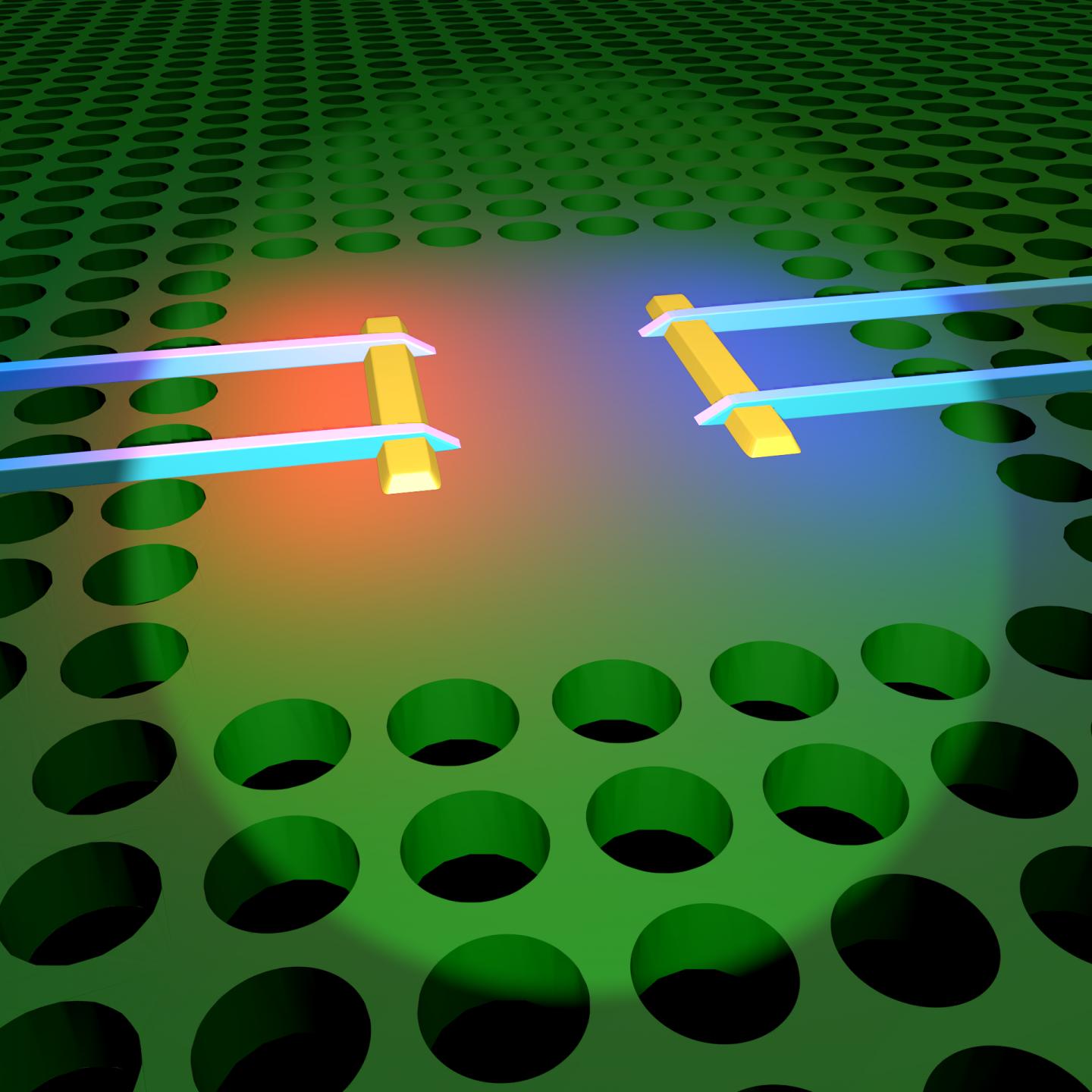
Credit: University of Jyvaskyla/Ilari Maasilta
The group of professor Ilari Maasilta at the Nanoscience Center, University of Jyväskylä specializes on studying how different nanostructures can be used to enhance or impede the transport of heat. The group’s latest results, published in the journal Physical Review Applied on the 3rd of July, 2019, confirm its earlier observations that by using the wave nature of heat in holey nanostructures heat conduction can be reduced by over hundredfold.
The most important applications of controlling heat transport are in fields such as thermoelectric power conversion and cooling, and bolometric radiation detection.
The holey structures consisted of thin insulating silicon nitride plates containing a periodic array of holes in two directions. In principle, any other material could be used, as well. In particular, the group demonstrated that there is an optimal periodic structure, which minimizes the thermal conduction to a record low level, with a period of about 10 micrometers.
In addition, it was realized that if the hole side surfaces could be fabricated with atomic precision, heat conduction could be reduced even further with larger period structures.
“In the future, we will use these results to improve sensitive infrared radiation detectors for future space research, in collaboration with NASA”, says professor Ilari Maasilta.
###
The study was funded by the Academy of Finland.
Article: “Minimizing Coherent Thermal Conductance by Controlling the Periodicity of Two-Dimensional Phononic Crystals” (Yaolan Tian, Tuomas A. Puurtinen, Zhuoran Geng, and Ilari J. Maasilta), Phys. Rev. Applied 12, 014008 (2019)
Link to publication: https:/
Link to research of thermal nanophysics at University of Jyväskylä: https:/
More information:
Professor Ilari Maasilta, [email protected] , tel. +358408054098
Communications officer Tanja Heikkinen, [email protected], tel. +358 50 581 8351
https:/
Facebook: jyuscience Twitter: jyscience
Media Contact
Ilari Maasilta
[email protected]
Related Journal Article
http://dx.



